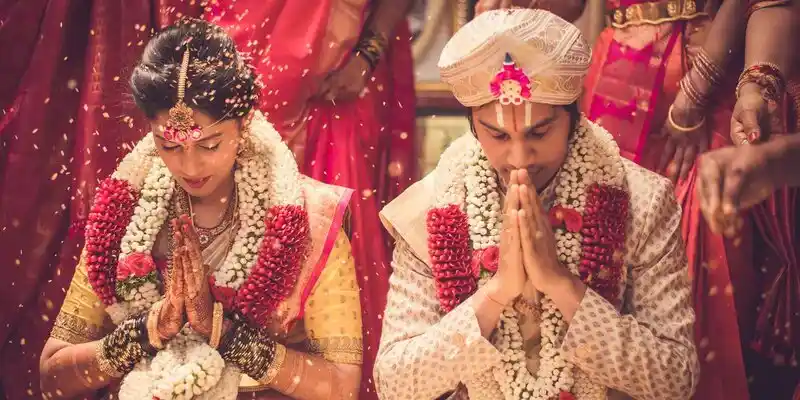People of Tamil Nadu
Home »
People of Tamil Nadu are strongly knitted with a strong base of ethnicity. Originated from Dravidian community, the locals take pride in their ethnicity. Although Tamil Nadu is one of the most urbanized states in the country, most of the people here still live in villages. The caste system in Tamil Nadu is very prominent and strong. A large part of population of Tamil Nadu is settled in Chennai, Madurai, Tiruchchirappalli and Coimbatore. Majority of population, approximately 80 per cent, follow Hinduism; the remaining follows Christianity and Islam. Brahmins are the highest of the caste under the social hierarchy. The official language of the state is Tamil which is derived from Brahmi script. Agriculture, animal husbandry and other associated business are the source of the livelihood for the people of Tamil Nadu. Other major sources of income are handicrafts, intricate metal works and handicrafts. The people are relatively religious and most of the settlements are situated near temples which are controlled by the Brahmins. The social group of the state is divided in 11 categories which are following:

Iyer
Followers of Advaita philosophy, Iyers are the Hindu Brahmin community of Tamil origin. The Iyers are believed to be the top most sects of Brahmins in Tamil Nadu. Based on cultural and religious differences, Iyers (also spelt as Ayyar, Aiyer or Aiyar) are divided in several sub categories. During ancient times, Iyers were also known as Anthanar or Parppan, although Parppan was scarcely used. Like any other caste, Iyers are also divided based on Gothra and the Veda followed by each and each are further divided in sub sects such as Vadama, Brahacharanam or Brahatcharanam, Vathima, Sholiyar or Chozhiar, Ashtasahasram, Mukkani, Gurukkal, Kaniyalar and Prathamasaki; these sects are further subdivided. Iyers live throughout south of India, however, majority of the Iyer population live in Tamil Nadu.
Kapu
The word Kapu means protector. The category Kapu is the agriculturist living in Andhra Pradesh. Forming a heterogeneous peasant caste, Kapus are primarily agrarian and use the title Naidu. Kapus had migrated from north and in order to settle in Tamil Nadu, they cleared the forests and readied the land for farming and settlement. The migration took place around 2500 years ago and they formed their initial settlement on the banks of Godavari River. Initially, the Kapus took up the military responsibilities and did farming during the peace time. Most of the Kapus have settled in the coastal districts of North Telangana and Rayalaseema regions of Andhra Pradesh. Today, the Kapus have united together to fight for their political rights socially. The Kapus from the coastal districts are more prosperous than the Kapus of Munnuru, who come under the OBC (other backward class) class.
Mukkulathor
Dominantly living in the central and southern districts of Tamil Nadu are the Mukkulathor people who as a group are known as Thevar. Thevar is translated as divine-natured people Agamudayar, Kallar and Maravar are the three communities that believe in a common myth that they all have been formed through an alliance between Indra and celestial woman and they all perceive themselves to be superior to the other. While these three communities share the same ancestor, they believe in different descendants. Mukkulathor live mostly in Madurai, Theni, Dindigul, Sivagangai, Pudukkottai, Ramanathapuram, Thanjavur, Thiruvarur, Nagapattinam, Tiruchirapalli and Thirunelveli. Education is not much of an importance among Mukkulathor people; they believe more in agriculture and farming because of which the community has been given the class of OBC by the Government of Tamil Nadu.
Nadar
The caste has been originated with an amalgamation of several related sub castes which later emerged as Nadar which is also known as Nadan, Shanar and Shanan. Majority of Nadars were engaged in cultivating Palmyra trees and jaggery and toddy trade. One of the largest sub-sects of Nadar, Nelamaikkarars, was the rich land owners and money lenders. The Nadars practiced the art of Varma Kalai, a form of martial art. The Nadars were least interested in academics as they started to earn money out of trading. Hence, were pronounced OBC by the Government of Tamil Nadu. The origin of the Nadar group is not known. Currently, a majority of Nadars live on the south of Thamirabarani River. The Nadars are believed not be very interactive with others and were divided in many sub castes such as Palmyra climbers.
Komutti Chettiars
Komutti Chettiars is the merchant community of Tamil Nadu state. Apart from commerce, they are also involved in weaving business, banking and money lending. They use the title Chettiar and live in the region of Chettinad. Chettiars are usually vegetarians and all their feasts and events follow a vegetarian menu. There is a lot of emphasis on the architecture of the commercial and residential buildings. The Chettiars originate from Karaikudi and are known for their opulent building and Chettinad cuisine. There are further sub categories such as Devanga Chettiar, Nagarathar, Manai Telugu Chettiars, Pattanavar, Chitty, Tamil diaspora, and Kandangi sari.
Pillai
Pillai is one of the most superior castes in the state of Tamil Nadu. They are divided in two poles-apart categories; Asaiva Pillai (Non-Vegetarians) and the Saiva Pillai (Vegetarians). Interestingly, both the categories are forward and backward classes. The Pillais have been originated from Vellalar community with Serakula Vellalar, Pandiya Vellalar, Sozhiya Vellalar forming the main groups and most of the Saiva Pillais have been converted into Asaiva Pillai. The literal meaning of Pillai is ‘child’. This is the educated community mainly into business, entrepreneur, Mathematician, landlords. In Kerala, the Pillais belong to Nair community. Most of the educated Pillais have moved out of the state or the country for better future prospects.

Leave a Reply